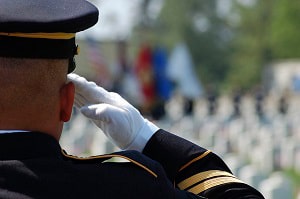Hands In Pockets Army Regulation
I've always wondered why military personnel are not allowed to put their hands in their pockets. It's a seemingly simple gesture that most people take for granted. So, I decided to delve deeper into the Hands In Pockets Army Regulation and find out the reasons behind this rule. Let's explore this topic together and shed some light on this intriguing military regulation.
1. The Origins of the Regulation

The prohibition on soldiers putting their hands in their pockets is rooted in military tradition and discipline. This regulation has been in place for a very long time and is deeply ingrained in military culture. It serves as a distinctive feature that sets military personnel apart from civilians.
2. Maintaining a Professional Image

One important reason behind the Hands In Pockets Army Regulation is to maintain a professional and disciplined image. Soldiers are seen as representatives of their respective branches of the military, and their appearance must reflect the highest standards of professionalism and military bearing. Keeping their hands out of their pockets promotes a more alert and attentive stance.
3. Readiness and Preparedness

The military operates under the principle of readiness and preparedness. Soldiers should always be ready to react quickly and efficiently to any given situation. By keeping their hands free and outside of their pockets, they are better equipped to handle any sudden requirements or emergencies that may arise. This rule ensures that soldiers have full use of their hands at all times, maximizing their ability to respond to any challenges they may face.
FAQs
Q: What happens if a soldier is caught with their hands in their pockets?
A: Violations of the Hands In Pockets Army Regulation can result in disciplinary action, ranging from minor punishments such as extra duties or loss of privileges, to more severe consequences such as reprimands or even court-martial proceedings. Military leaders enforce this regulation as part of their responsibility to uphold military standards and discipline.
Q: Is there any exception to the regulation?
A: Yes, there are certain situations where soldiers are permitted to put their hands in their pockets. For example, during extremely cold weather conditions, soldiers may be allowed to briefly seek warmth by placing their hands in their pockets. However, even in such cases, soldiers are expected to maintain situational awareness and promptly remove their hands if necessary.
Q: Do all branches of the military have the same regulation?
A: While the Hands In Pockets Army Regulation specifically applies to the United States Army, similar regulations are followed by other branches of the military as well. Each branch has its own set of rules and regulations regarding military bearing and appearance, with the common goal of maintaining professionalism and discipline.
In conclusion, the Hands In Pockets Army Regulation may seem like a minor detail, but it plays a significant role in maintaining the professional image and readiness of military personnel. By adhering to this regulation, soldiers demonstrate their commitment to upholding military values and traditions. Let us remember to respect and appreciate the dedication of our servicemembers as they carry out their duties with discipline and professionalism.
The 10 Most Ridiculous Military Regulations, Customs, And Courtesies
hands pockets military army regulations courtesies customs irk uniform ridiculous most them regulation chilling peeve specific biggest pet why service
Why Can't Military Put Hands In Pockets? [Military Rules]
![Why Can't Military Put Hands in Pockets? [Military Rules]](https://www.thesoldiersproject.org/wp-content/uploads/2022/05/hands-in-pockets-army-regulation.jpg) Image Source : www.thesoldiersproject.org
Image Source : www.thesoldiersproject.org Soldiers Photographed In WaPo With Their Hands In Pockets
 Image Source : taskandpurpose.com
Image Source : taskandpurpose.com soldiers wapo washington
Soldiers Photographed In WaPo With Their Hands In Pockets
 Image Source : taskandpurpose.com
Image Source : taskandpurpose.com syria iraq isis wapo refers taskandpurpose
Why Can't Military Put Hands In Pockets? [Military Rules]
![Why Can't Military Put Hands in Pockets? [Military Rules]](https://www.thesoldiersproject.org/wp-content/uploads/2022/05/military-hands-in-pockets.jpg) Image Source : www.thesoldiersproject.org
Image Source : www.thesoldiersproject.org Army Hands In Pockets
 Image Source : defencelab.info
Image Source : defencelab.info 21 Photos Of US Military Legends With Their Hands In Their Pockets - We
 Image Source : www.wearethemighty.com
Image Source : www.wearethemighty.com pockets wearethemighty
Why Can't Military Put Hands In Pockets? [Military Rules]
![Why Can't Military Put Hands in Pockets? [Military Rules]](https://www.thesoldiersproject.org/wp-content/uploads/2022/05/why-cant-military-put-hands-in-pockets-300x179.jpg) Image Source : www.thesoldiersproject.org
Image Source : www.thesoldiersproject.org Pockets wearethemighty. Soldiers photographed in wapo with their hands in pockets. The 10 most ridiculous military regulations, customs, and courtesies. Why can't military put hands in pockets? [military rules]. Soldiers photographed in wapo with their hands in pockets